Ontos - 106-mm multi-barreled anti-tank self-propelled artillery mount M50
Ontos is Greek for "thing". When applied to an armored marine vehicle, this may mean "a rare thing." This armored vehicle made a significant contribution to the success of the operations of the Marine Corps and the US Army in Vietnam, but it is less known about it than any other armor produced by the US military. Even among collectors of military vehicles, the name Ontos is often surprising. The reason for this may be due to the fact that Ontos were produced in small quantities. So, by the beginning of the Vietnam War, the US Marine Corps had only 176 machines. Another factor is that the Marines quickly disposed of the remaining armored cars, destroying most of the corps and artillery installations. Only a few surviving Ontos specimens have fallen into the museums and the hands of collectors, and his story remained untold. To date, more have survived. tanks World War I than Ontos.
General review
Ontos was a relatively light tracked combat vehicle developed at the beginning of the 1950s to destroy the main battle tanks of the time with six 106-mm recoilless guns. Despite its miniature size: 3.81 meters long, 2.6 meters wide, it housed three crew members in a compartment a little over 1.2 meters high. She served in the United States Marine Corps from 1956 year to 1970 year, when most of them were disposed of. Her service in the Marine Corps coincided with the use of 106-mm recoilless guns by the Corps.
For the first time, Ontos gained combat experience through 10 years after its adoption. This happened when it was used against insurgents in the Dominican Republic in April 1965. The second combat use was in Vietnam, where she played a role that had nothing to do with what this small, fast tank destroyer was originally intended for.
If it is true that any army uses tactics and equipment in its current war from its last war, then a sign of a successful army is its ability to adapt everything that can help it to accomplish a new mission. Ontos and its crews had to convince the management of the Marine Corps that this combat vehicle has suitable tasks in Vietnam. The success in convincing his command of the potential of Ontos was not so unambiguous. The machine was operated at the company level and convinced the leadership of its huge firepower needed infantrymen; firepower can affect the outcome of the battle.
I am struck by the similarity of the use of Ontos in an infantry company using a small Stewart tank by marines in battles in the Pacific region during World War II. Both were lightly armored and unable to withstand arms above 50 caliber. Both of these vehicles were effective due to their small size and the ability to provide infantry in combat with relatively high firepower. Their size allowed them to operate in areas where large tanks could not. Caterpillars half a meter wide allowed the 9-ton and Ontos to operate on the soft soils surrounding the rice fields of Vietnam. Both were used to destroy bunker busters. Thanks to their close location to the front line, the ability to be quickly deployed and overcome the fortified positions of the enemy, the loss of infantry was significantly reduced.
Ontos, like a hive, shoots hundreds of bees capable of clearing the jungle from their enemies with their stings. Then there was no other weapon capable of clearing the jungle to a depth of 400 meters, like 106-mm recoilless cannons with cluster projectiles with ready arrow-shaped striking elements. The effectiveness of artillery shells and bombs was limited to the zone of direct hit. The vegetation of the jungle absorbed the blast wave and scattering fragments. Other vehicles with 106-mm recoilless guns mounted on them were open to enemy fire from small arms. Ontos could substitute himself under enemy small-arms fire for a short time in order to release his ammunition when it was needed and move to a safer place for reloading. It was an armored shotgun, and the North Vietnamese army was afraid of him.
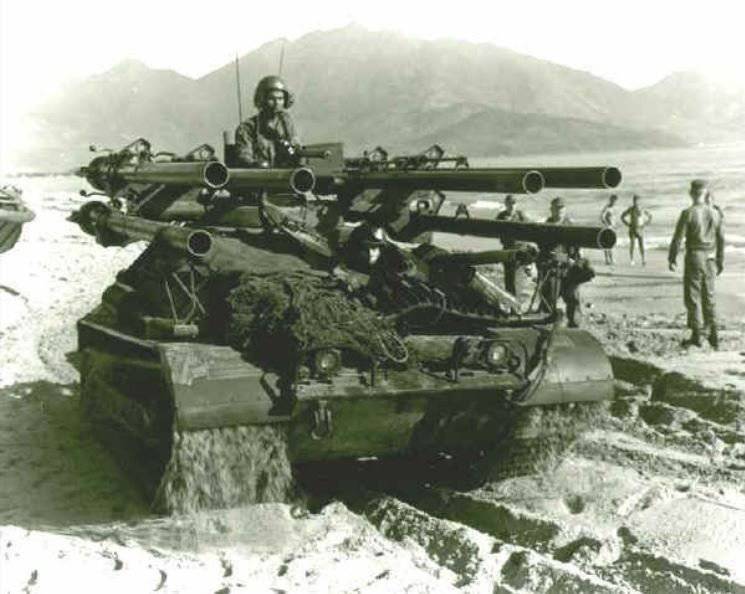
For a veteran, the army of any country is not a surprise that weapon systems are used for other purposes, unsatisfactorily and / or are forgotten generals who demanded their development. Ontos suffered the same fate. The deployment of Ontos seemed to be very much thought of by many commanders, and the provision of spare parts to Ontos was a matter of serious concern.
Ontos was developed in another era for other purposes. Designed to destroy tanks, Ontos was outdated before it fell into the hands of its first crew. She went to the soldiers who rethought its use and turned it into a weapon of the Marine Corps.
Ontos crews were selected from the marine infantry battalions in order to master the skills of the gunners, radio operators, mechanics and the study of tactics. Marines assigned to infantry battalions were designated 0300. Crews Ontos were fighters in the past of different military specialties. Some crew members had experience handling vehicles, but most were probably former gunners. After their missions to anti-tank units, they usually returned to the battalions, from which they came to be sent to other anti-tank units.
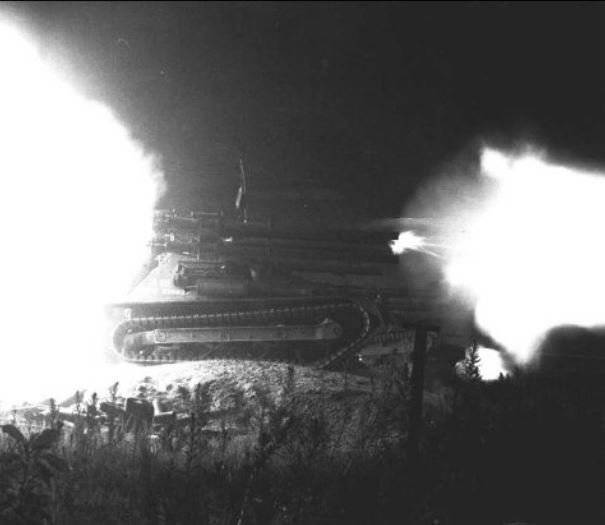
The naval high command was unanimous in sending the marine infantry against the army of North Vietnam and the Viet Cong fighters. They were confident that individual marines, in combination with traditional artillery and air cover, would be able to defeat this enemy who does not possess such weapons.
Everyone believed that Vietnam was not capable of tank operations. If he could, then he would, put the armored vehicles on the battlefield. Since the tanks were not advanced by North Vietnam, there was little benefit from small anti-tank armored vehicles known as Ontos or as a "pig."
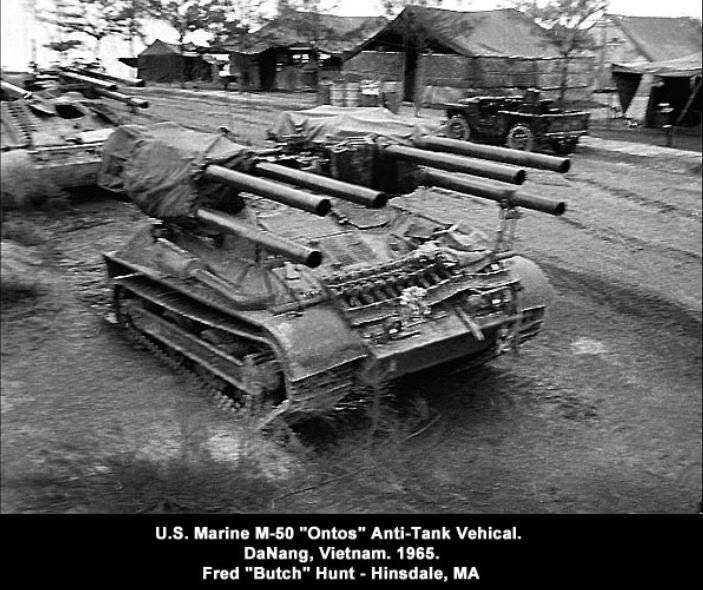
The Marines brought into battle the M48A2 and 106-mm multi-barrel Ontos self-propelled artillery artillery, but they were not in the focus of regimental and battalion commanders along with traditional weapons, such as 81-mm and 107-mm mortars, 105-mm artillery and direct aviation support.
The deployment of Ontos was often driven by the instinctive decision of battalion commanders. They were mainly used as perimeter defense with some limited responsibilities.
The Vietnam War was ruled by American politicians; with the rules of use of the armed forces completely confusing military command. The US Air Force was forbidden to bomb air defense positions that had exhausted their ammunition. At the beginning of the Vietnam War, the enemy could retreat to areas that were forbidden to invade American forces. These rules in relation to the crews of Ontos meant that the use of their main caliber or even its charging can be carried out exclusively with the permission of the battalion command. At the beginning, the Ontos crews had to go to combat areas with unloaded guns. Later they were allowed to charge 106-mm guns, but they did not have the right to open fire at their own discretion. These rules were a nightmare for veterans of the Second World War or the Korean War.
If the command of the Marine Corps ignored the advantages of Ontos, the army of North Vietnam is quite the opposite. In almost all of my interviews with Ontos crews, one moment can be traced. The army of North Vietnam was afraid of Ontos and, if possible, avoided contact with it. Most of the contacts between the North Vietnamese army and Ontos were casual by the Vietnamese.
Development
The Ontos project was commissioned in early November 1950 of the year to the agricultural machinery manufacturer Allis-Chalmers Wisconsin. The design department of Allis-Chalmers consisted of approximately 50-and 60-and engineers, 90% of which were engaged in the development of the first prototypes. All prototypes were built at an agricultural assembly plant in Laporte, Indiana.
The project was initially conceived by the government as a tank destroyer capable of being transported on 1950's cargo aircraft. The contract provided for the supply of army 1000 machines. In 1953, the army refused to take Ontos into service, in turn the Marine Corps adopted the order of 300 machines.
The government customer in the person of the chief engineer Carl Holmyard (Carl Holmyard) compiled a technical task with a volume of just one sheet. According to him, the car had to be equipped with the same GMC six-cylinder gasoline engine as the standard 2 ½ ton military trucks that day and a front-mounted Allison transmission transmitting torque to the tracks. The rest of the specification was limited by the external dimensions and weight of the machine in order to ensure air transport.
The project has been classified ka "Confidential". This is the lowest degree of secrecy for government work, but it still required prototypes to be built in a fenced section of an agricultural machinery factory. The government was ready to accept prototypes for testing only after the machines had completed 50 hours. This required engineers to come to the factory on weekends and run prototypes around the Ellis-Chalmers plant.
Ontos had two large rods, which were installed on six recoilless guns. These rods were connected to the submerged tower. All this design was made of armor steel. Early prototypes could deploy guns in less than 15 degrees left and right. Serial Ontos have already been able to deploy guns 40 degrees left and right.
Welding the armored hull proved problematic for Ellis-Chalmers. Several prototypes were flawed when practicing proper welding methods.
The first prototype of the Ontos had tracks similar to those used on self-propelled Scorpion artillery. They were subsequently changed. This first prototype of Ontos still exists and is in the hands of the collector Fred Ropkey.
Subsequent and final tracks and suspension were new designs. Each caterpillar consisted of two rubber sections 1.2 long meters with steel teeth in the center. Steel grouser half a meter wide connected rubber and comb. 5 sections were used to compose one track. A motivated crew could replace the track section in about an hour and a half. One sailor told me that they managed to repair the track in 42 minutes.
The suspension system was designed in such a way that none of its mechanisms interfered with an already small combat compartment. Basic rollers through balancers connected to the torsion shafts attached to the sides of the hull. Much attention was paid to the special rubber compositions of the sleeves.
Rubber soft fuel tank was installed in the front of the machine directly behind the front sheet. It was molded from rubber and contained tubular passages through its center, allowing the left drive shaft to transmit torque through the fuel tank to the left drive sprocket.
Allis-Chalmers developed a kit for Ontos to overcome a deep ford, but it was not adopted by the Marine Corps. It consisted of a waterproof coating for the engine, so the engine remained dry while overcoming the ford. Facilities to overcome the ford were transported on Ontos and should have been installed immediately before overcoming the water hazard.
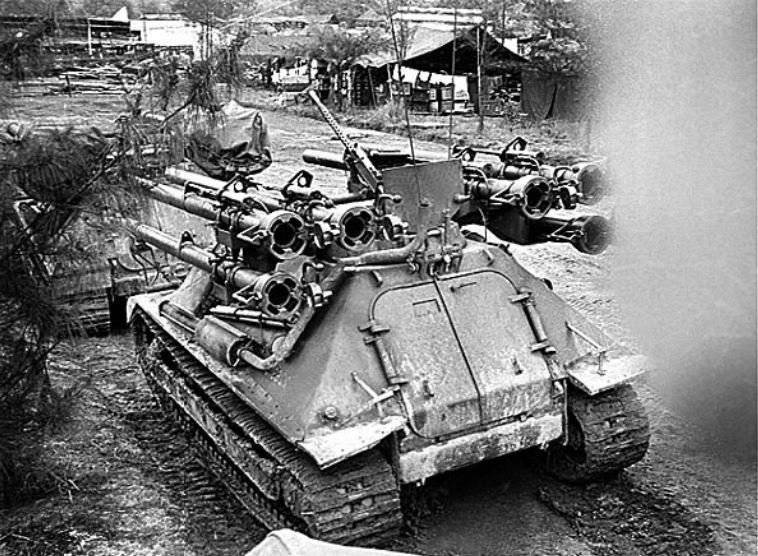
One of the problems that had to be solved by Ellis-Chalmers was related to the position of the track. The lower part of the chassis was made by welding. Welding deformations influenced the location of the suspension, resulting in a loss of the track. Replacing welding with machining the lower part of the body, where the suspension is bolted to the body, finally solved this problem.
Allis-Chalmers has also developed an Ontos tracked armored personnel carrier. The BTR was equipped with one extra 1.2 meter-tracked section. The existence of photographs confirming the existence of a prototype armored personnel carrier is unknown.
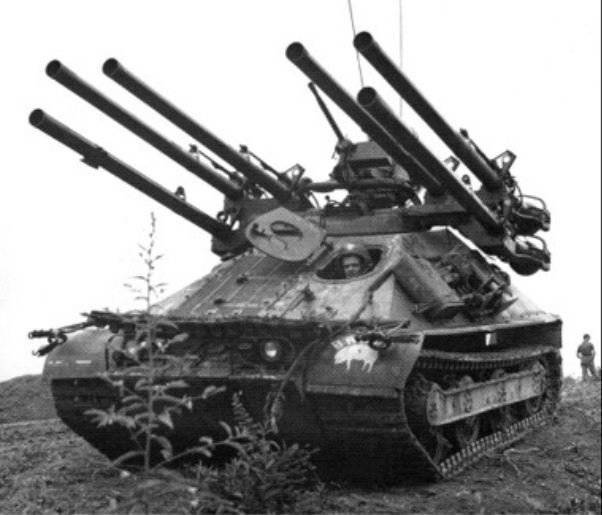
Most of the design work was completed in the 1950 year during a two-week design marathon. The Marine Corps tested the machine for the next six years and eventually put it into service at the end of 1956. In his report, the chief engineer notes that in the period from 1957 to 1959, a number of changes were made to the design. This report by the chief engineer Craig Canon (Craig Cannon) refers to the main Ontos revision called the “1960 Project”. Some of the proposed changes included the use of an aluminum amphibious body and two 105-mm recoilless guns (designated as T237 guns) equipped with a cylindrical revolver charger. This change would allow multiple shots of two guns without the need of one of the crew members to leave the car to reload guns outside. Another important change was to replace the engine with a turbine engine. "Project 1960" was not accepted.
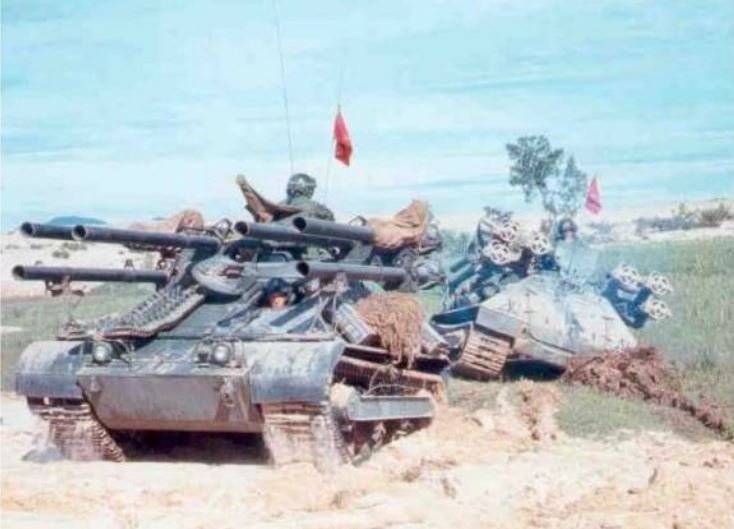
One of the first tests was the sighting system of the tower with six guns. Part of the test included the simultaneous firing of all six guns. The test armored vehicle was delivered to the Aberdeen training ground specially built for testing 106-mm recoilless guns. No one imagined the effect of shooting six guns at once, at least none of those who planned the test complex. A reverse flame during firing vomited several bricks from a nearby building and smashed the rear windows of several cars.
Allis-Chalmers later upgraded Ontos: replaced the 6 and cylinder engines with the 6 and liter V8 Chrysler. The upgrade also included the replacement of an armored engine cover with additional ventilation. It is believed that from 300-from manufactured machines only 176 Ontos have undergone upgrades.
Ontos armored hull
The frontal Ontos armored plate in 129 cm width was 25 mm thick. The front plate formed the front part of the vehicle body and protected the driver and the transmission from ground level to height in 70, see. The side plates to which the suspension elements are attached form the side walls of the compartment compartment slightly thicker than 12.7 mm. The bottom of the fighting compartment is made of armor steel 6.5 mm thick. Most of the rest of the body is made of armor with a thickness of 12.7 mm. The front covers of the engine are cast from armor steel and their louvers have 10 mm stripes, made on the inside of each louver to prevent the penetration of small arms fire into the engine compartment.
It was rumored that Ontos had a high center of gravity and tended to overturn. I found that the machine with the dismantled guns still weighed more than 5 tons. The center of gravity of these five tons was within the height of the tracks (86 cm). Therefore, I doubt that Ontos was with an overestimated center of gravity. Crew members told me that the car would rather slip by skidding on a steep hill before turning over.
106 mm recoilless rifles
Ontos had the opportunity to shoot from his 106-mm recoilless guns at one or more at once or even all at once. Four of the six guns had twin machine guns caliber 12.7 mm. The firing range of machine guns approximately corresponded to the firing range of an 106-mm projectile. These machine guns were used as an indicator (traser), as they hit with a cloud of smoke. The gunner controlled the shooting, located behind the driver and the engine. The gunner often first fired at the target with a tracer and watched his flight. Often, without waiting for Traser to hit the target, he would shoot 106-mm projectiles. The maximum firing range of an 106-mm projectile was about 2700 meters. The 106-mm gun is generally considered to be a direct fire weapon, but the crews were trained and used it from closed firing positions at targets that are not within the gunner's line of sight.
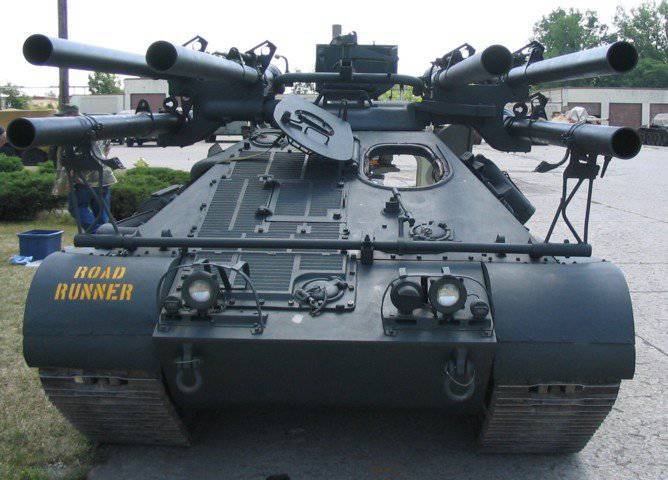
The 106-mm recoilless cannon is more than 3.4 meters in length and weighs about 130 kg each. The Ontos tower had to carry more than 770 kg on uneven ground. The load on the artillery mounts forced the crews to periodically level the guns.
Two of the six guns could have been easily dismantled from a self-propelled artillery mount and, if necessary, used from a ground mount.
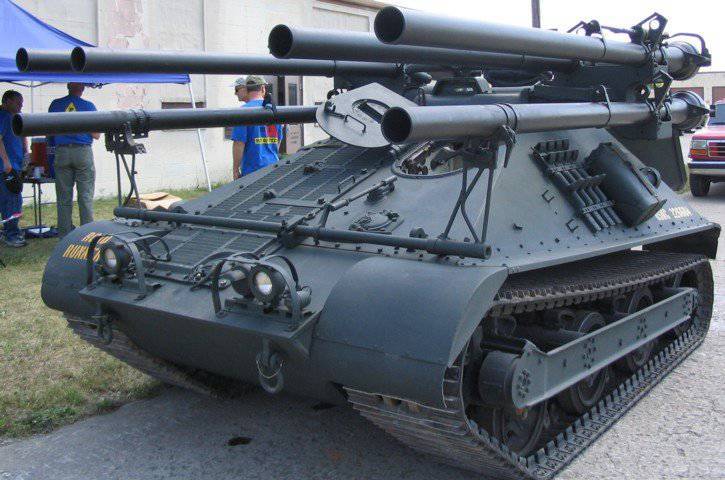
Combat organization Ontos
Ontos crew consisted of three people: the driver, the commander / gunner and loader. In cases where Ontos carried a lot of ammunition and / or other goods or in very hot weather, one could observe the driver’s loader sitting on the hatch, on the crossbar of the machine gun or in the odge-and-ton platoon Dodge truck often following the platoon on the march. Ontos could, in practice, move with the rear doors open where it was possible. This way of moving, to put it mildly, did not prevent the entry of road dust into the fighting compartment, which made the crew look like pigs. For this reason, crews are commonly called Ontos "pig".
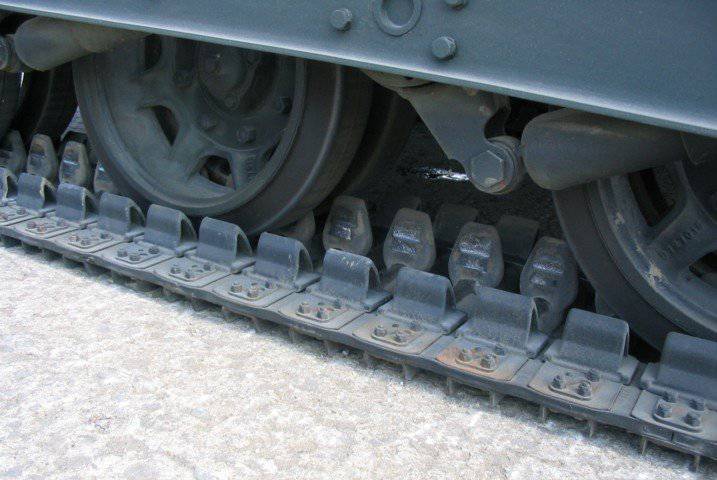
Crew training was varied and met the changing requirements of the war. Until March, 1965-year crews were trained at Camp Horno in the quarters of the 1-th Marine Division and Camp Pendelton on the California coast near Los Angeles. Later, the crew training took place on the spot in the units where they were assigned. They had to study: machine maintenance, small arms, tactics of use, as well as direct and non-direct fire. All marines were trained in the use of small arms, but Ontos crews also used machine guns not used by most of the marines. They also had to know how to use the three main radio stations and the internal communication. Some of the crews heading to Vietnam first went to the ground in Okinawa for extended day and night firing of 106-mm guns.
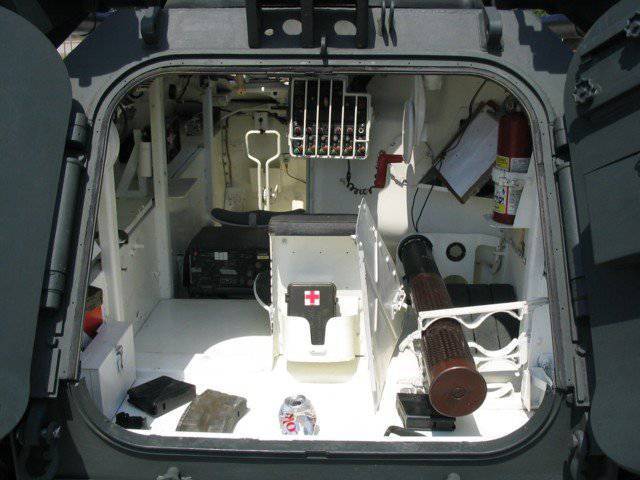
Ontos crews should have been able to replace the 1.2 meter caterpillar sections. They also had to be able to pull up a caterpillar that was repaired or past a series of sharp turns. The mechanic Ontos was assigned to each platoon, but the crew members were also helping to keep the machines in working condition. Platoons often dispersed when they were assigned to infantry units. A platoon mechanic was often unavailable for necessary repairs. Spare parts were often hard or even impossible to get. In connection with this, many Ontos have been disassembled into spare parts.
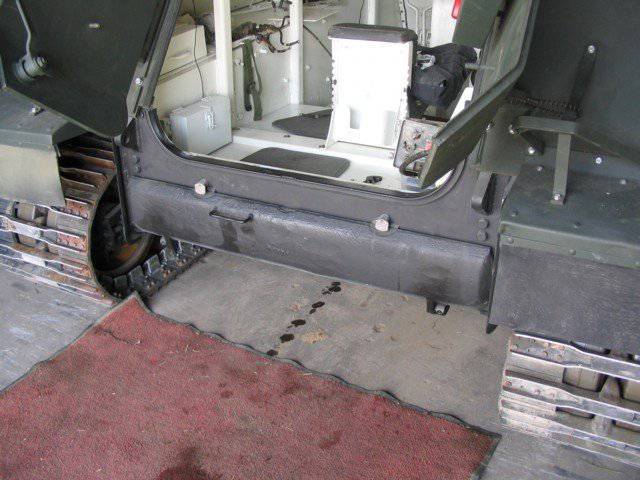
Ontos platoons were organized into heavy and light units. In the heavy compartment were three Ontos and two Ontos in the light compartment. The company had three platoons and three companies in the Ontos battalion. Ontos 1 and 3 battalions took part in the fighting in Vietnam. The cars were in Vietnam from the beginning of the 1965-th to the middle of the 1969-th year. There is some evidence that at the end of 1965 in Vietnam there was a 65 Ontos. If this figure is correct, it is likely that the 45 Ontos was part of the 3 th maritime anti-tank battalion and a smaller number in the 1 th maritime anti-tank battalion, some of the vehicles were on board ships waiting to be deployed at any hot spot in if necessary.
The Ontos crew had 6 th 106 mm projectiles in their guns. More 8 shells were placed in the rear of the installation under the rear hatches and 4 projectile in the rack located in the right rear of the machine. The loader had to dismount and reload the guns from this combat pack. The fighting compartment of the car, depending on the situation, could accommodate additional ammunition. I interviewed the platoon sergeant Ontos, who dismantled the driver’s and commander’s seats and placed extra shells in the tight 30 space. He sat on the ammunition while driving or shot from a gun.
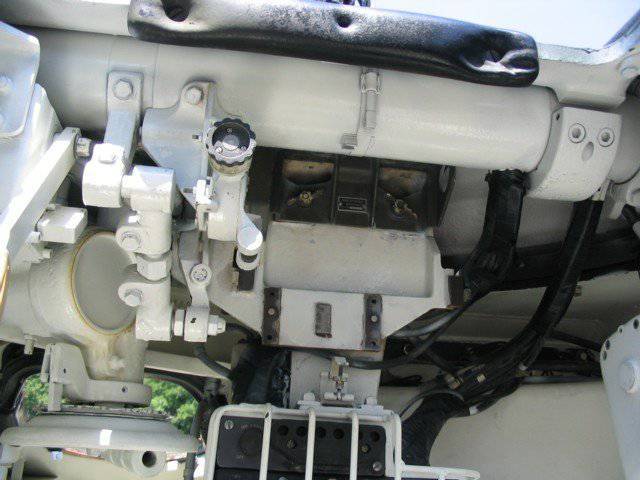
The crew also had an M-3A1 machine gun (also known as a “grease gun” or SMG programs) and a Colt 45 light machine gun and 250 cartridges, 1000 with tracer bullets for twin M8 machine guns of 12.7 mm, 1000 or more patches for the patrons, as well as for the patrons, to apply for the patrons, to apply for the patrons, to apply for the patrons, also, to apply for the patrons, for example, for the 1919 mm coaxial machine guns, 4 mm, 47 or more, for the cartridges, for 60 machine guns Many of the crew members also had personal small arms. Some of the personal weapons included rifles and captured weapons, such as the Thompson submachine gun, AK-XNUMX, Simonov automatic rifle, as well as French machine guns. One crew I knew also installed a XNUMX-mm mortar on the front panel of the Ontos.
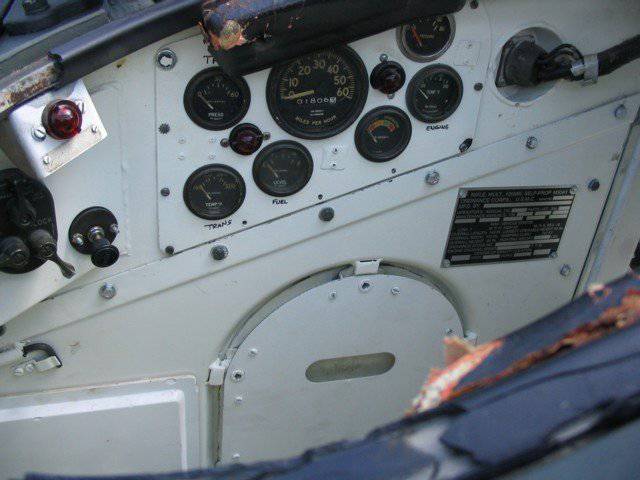
At that time, the marine infantry battalions were armed with M60 machine guns. For some unknown reason, the Ontos were armed with old Browning light machine guns. Some crews had the opportunity to move to a more modern, fully automatic weapon, but they opted for Browning. It was believed that the old Browning required to replace the barrel less often with intensive use. The Browning machine gun was mounted on an artillery / turret mount. It could be operated manually or remotely from the inside of the Ontos via a foot pedal.
What happened to Ontos?
The Marines stopped using Ontos in Vietnam in May 1969. Some Ontos remained in Vietnam and were transferred to a light infantry army brigade near Tam KY. The army used them until it became impossible due to the lack of spare parts. Then they were converted into fixed firing points. In May 1969, the remaining cars in Vietnam were loaded onto ships and returned to the USA. Crews were transferred to various battalions of marines.
Upon returning the cars to the USA, the upper part of the hull was cut off, and many of the chassis were sold as construction equipment or transferred to local government agencies for rescue work.
The existing Ontos are known to the author.
(In this section, the author lists museums in the United States where you can watch and touch the real Ontos. Those who wish can follow the link and ask about the addresses of the museums.)
The memories of the crew of their Ontos
(In this section, the author cites the memories of 6 veterans of the Vietnam War about their experience with Ontos. Those who want to read these memories can use the link to the original article.)
Conclusions
My conclusions about Ontos are based on my conversations / correspondence with two Ontos developers who had previously worked at Ellis-Chalmers, sixteen former Ontos crew members and personal restoration experience to date on four of my own vehicles. I can also rely on my bad memory of cars when I served in the Marine Corps.
My memories of Ontos include impressions of the smooth, quiet sound emanating from the engine and exhaust pipe while the car speeds up on the road. Transfers are switched exactly. To me, as a former racer in service in the marine corps, the engine / transmission combination reminded me of a highly modified hydrodynamic transmission used on the 1960-x auto racing route.
I also remember a slightly suspended suspension. The suspension had a larger stroke than the main battle tank M48. She looked more springy.
I’m surprised at one of Ontos’s main critical assessments that sound like this: 106-mm recoilless guns are far out of position due to excessive smoke, noise and dust raised by a reverse flame when firing. Crews were trained, and common sense says that after firing the guns, the machine must leave its position. This is called the "roaming tactics tactic". I do not come to mind the main weapon of shooting from which would not betray his position. I do not remember the silencers on artillery or tanks.
Many crews agreed that the caterpillars were weak. Steel lugs broke. Caterpillars were collected by small bolts, whose heads were usually rounded when moving in the sand.
Fastening the turret / artillery mount could be made more massive as it was bent from the weight of six guns bouncing on uneven ground.
Another strong criticism was about the need for a loader to leave a relatively safe car in order to reload recoilless guns from the outside. When Ontos worked in groups in a confined space, the crews had to make sure that the Ontos flame did not kill the other Ontos charging while recharging his car.
Ontos were in the middle of their life cycle when they entered Vietnam. They proved their usefulness even at the end of their life cycle and even when 106-mm recoilless guns needed to be replaced.
She proved her effectiveness in indirect fire when she acted with the main battle tanks M48 in repelling the only major attack during the siege of Khe San. Ontos were buried in the trenches and fired on invisible to enemy crews.
She was the main street fighter in the narrow lanes of Hue. Her guns knocked the enemy from the buildings from a distance from 3000 meters, as well as at close range.
By the time this machine received its recognition, its weapons were outdated and there were no spare parts for it. The mechanics made incredible efforts to keep the machines running, sacrificing one machine for the other two. The vehicles of the third anti-tank battalion were in terrible condition and the vehicles of the first battalion were not much in better condition when they had to take part in the largest marines battle in Vietnam in Hue. After losing cars and people in Hue, Ontos has exhausted itself. Their crews were returned to their battalions and a small part of the vehicles was returned to California for disposal.
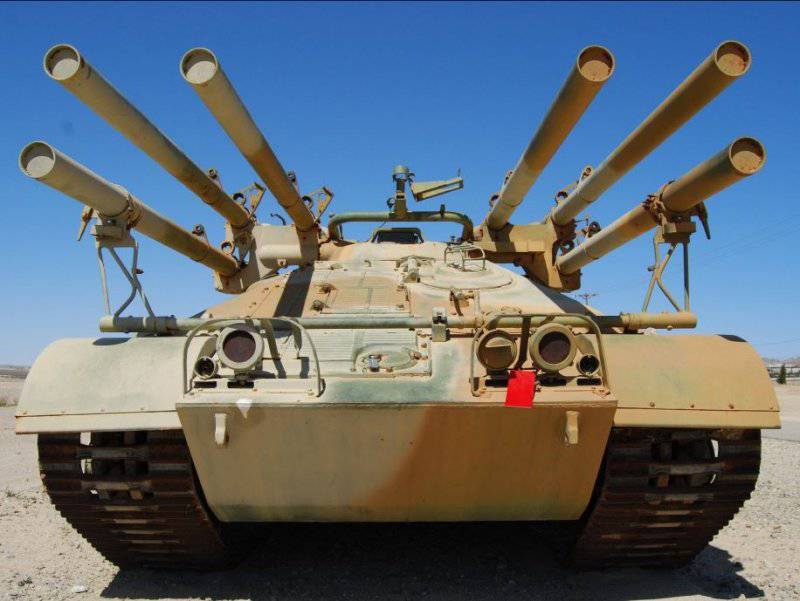
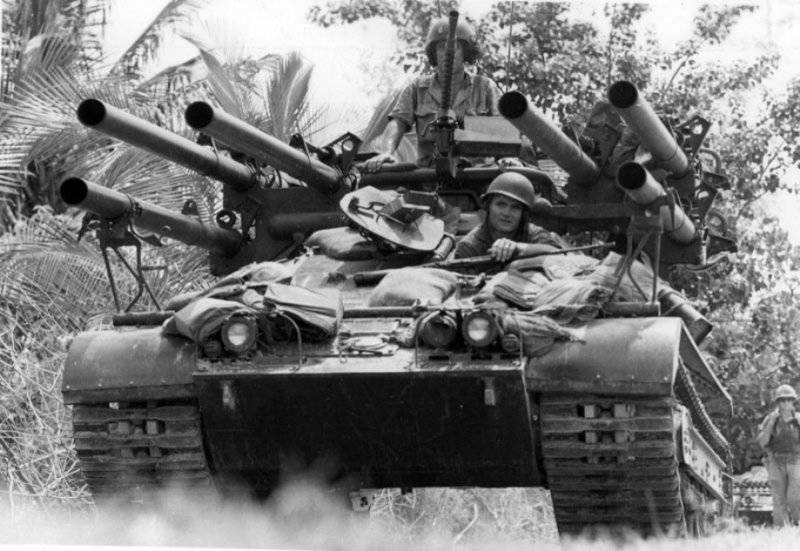
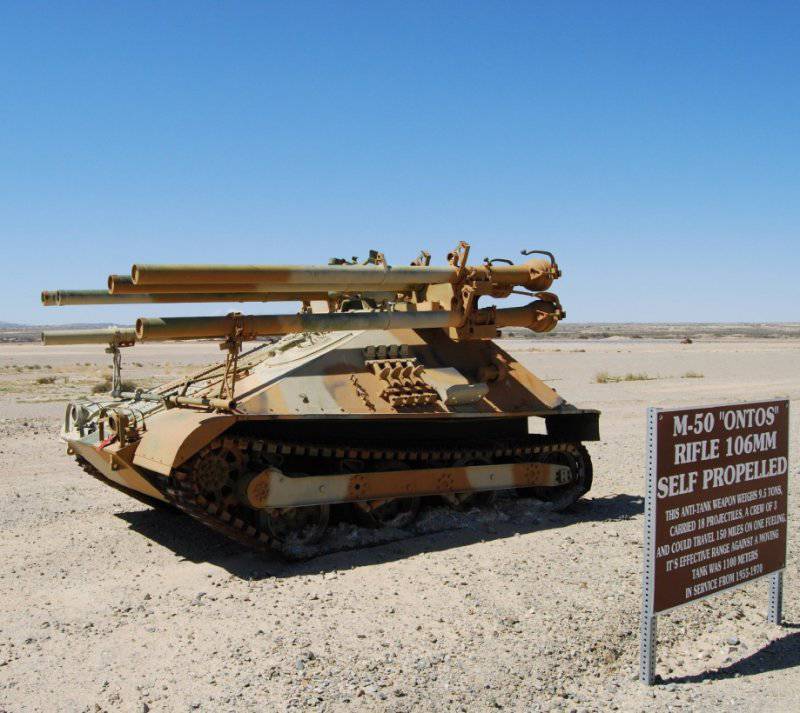
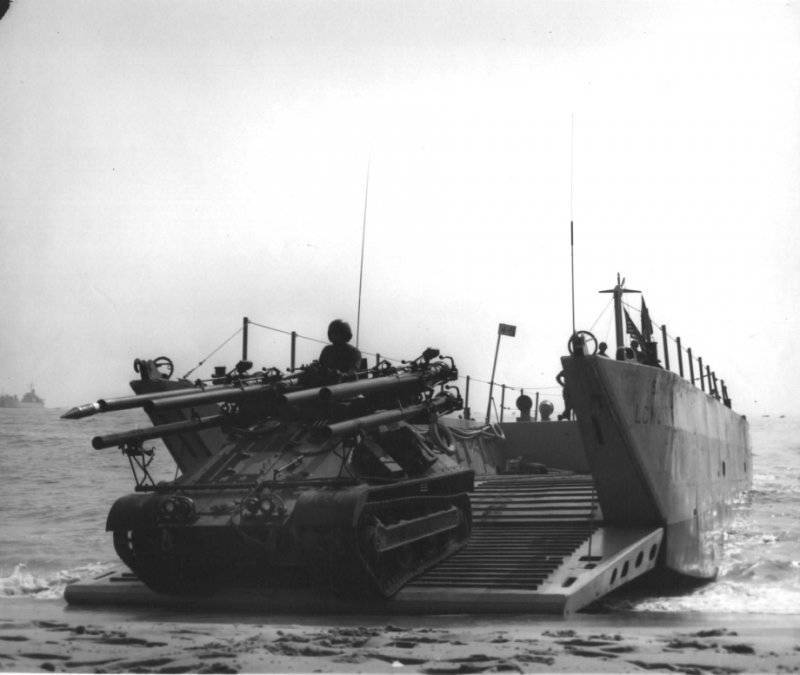
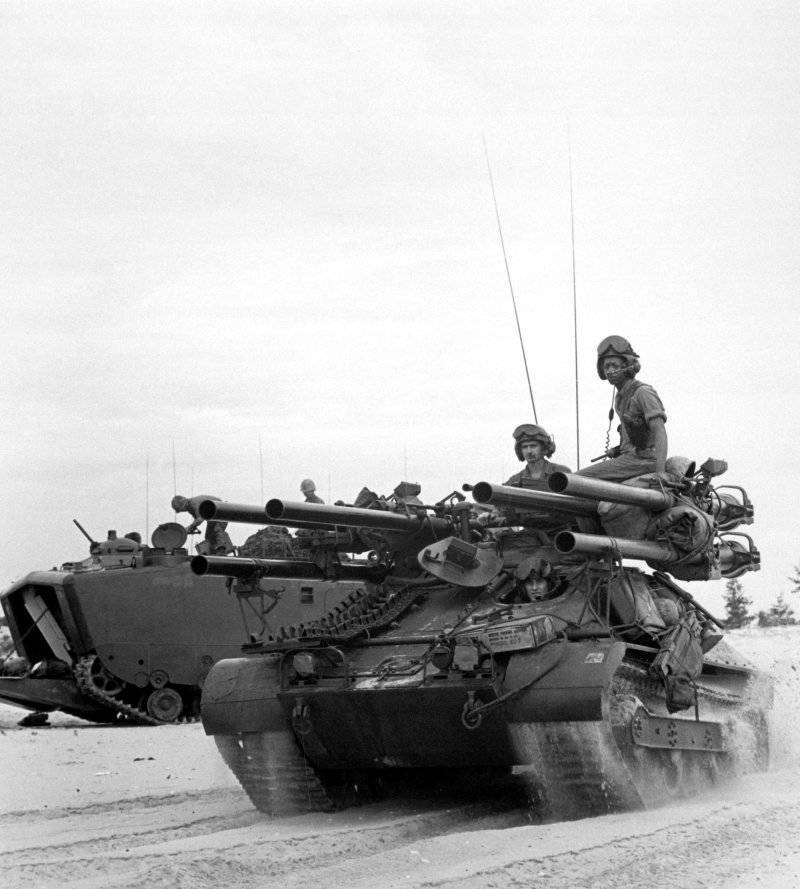
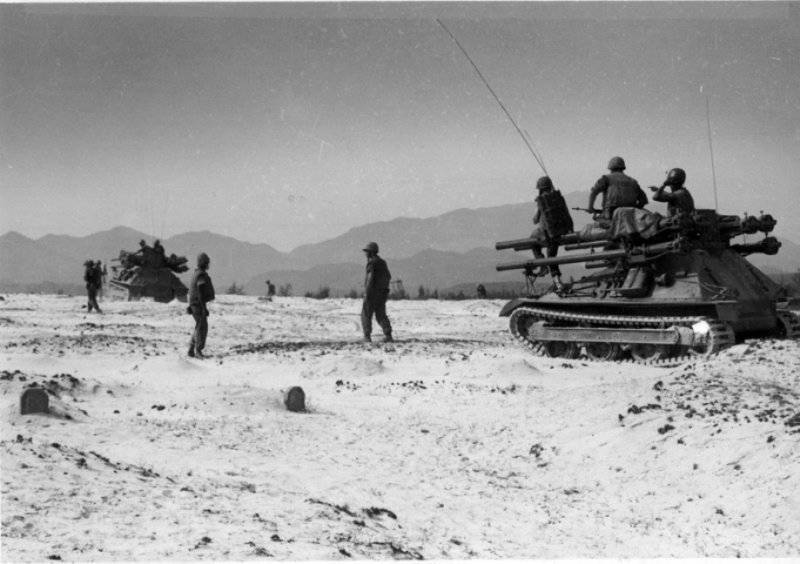
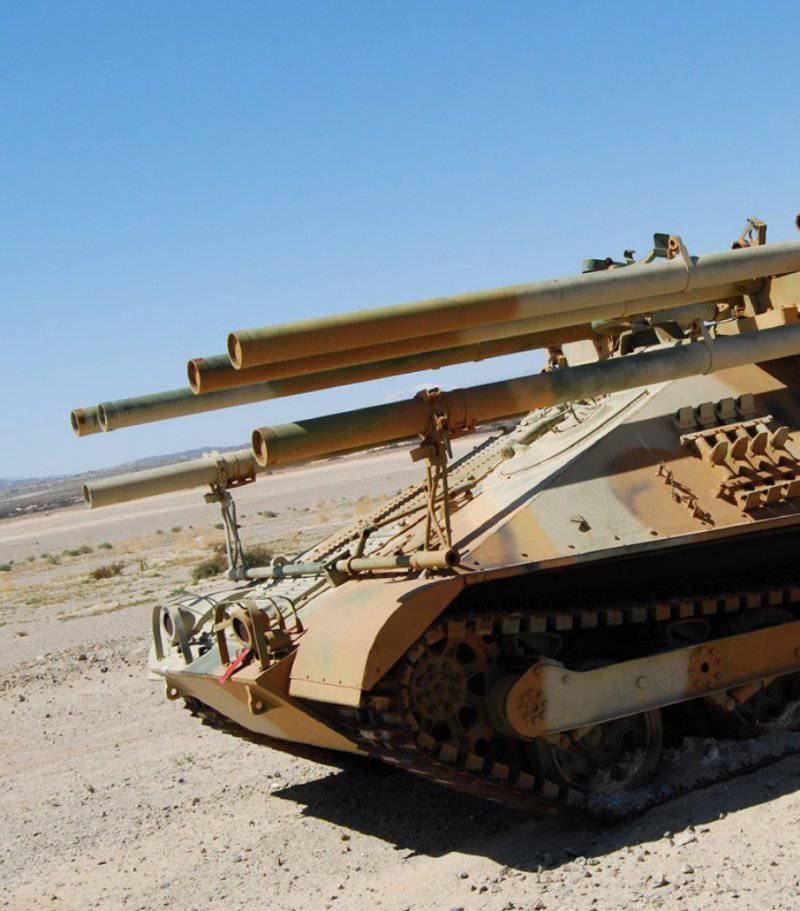
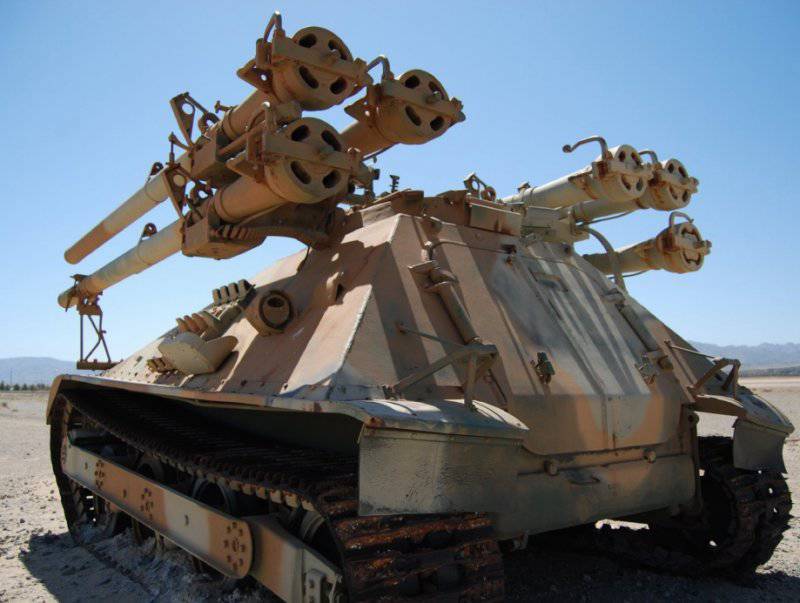
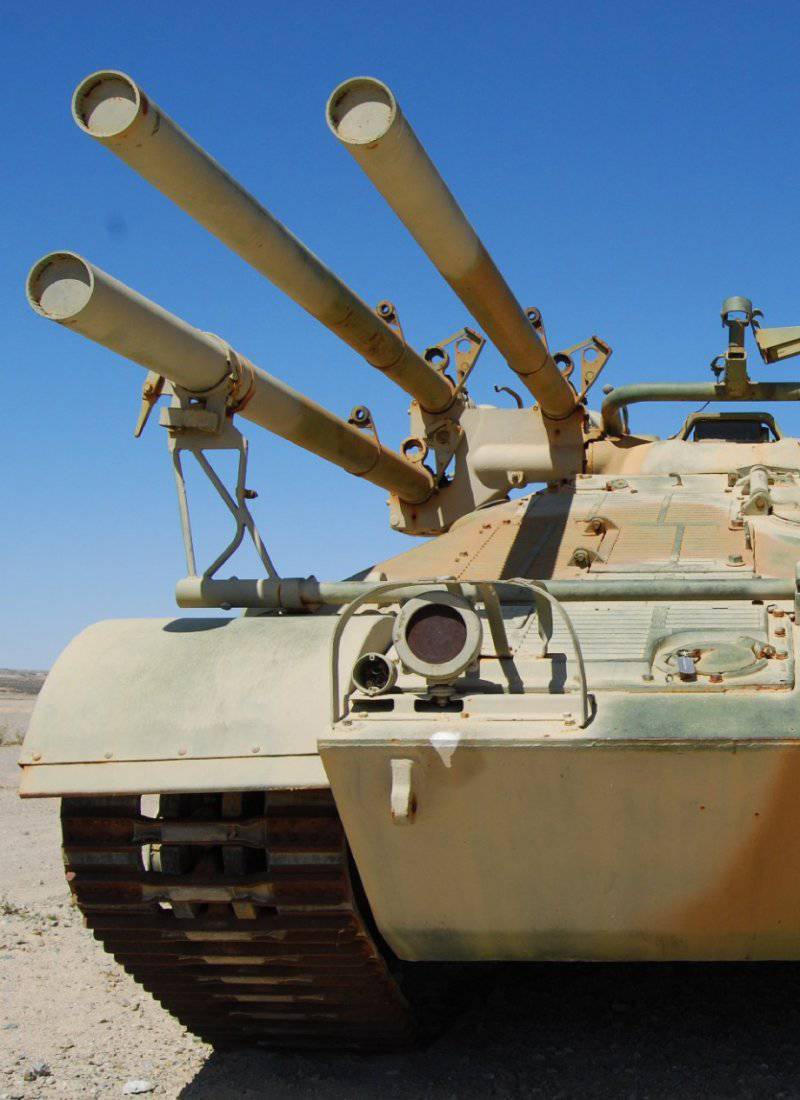
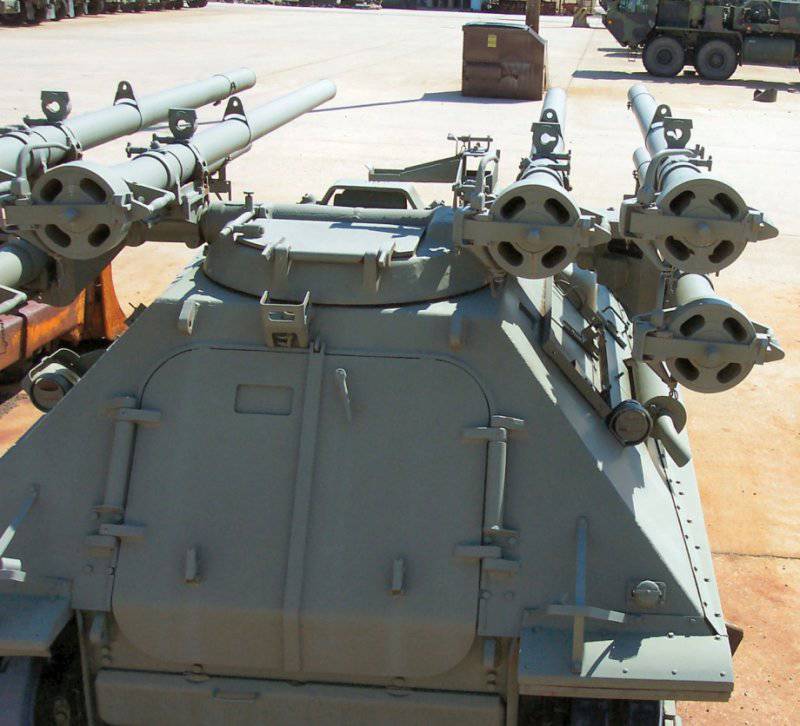
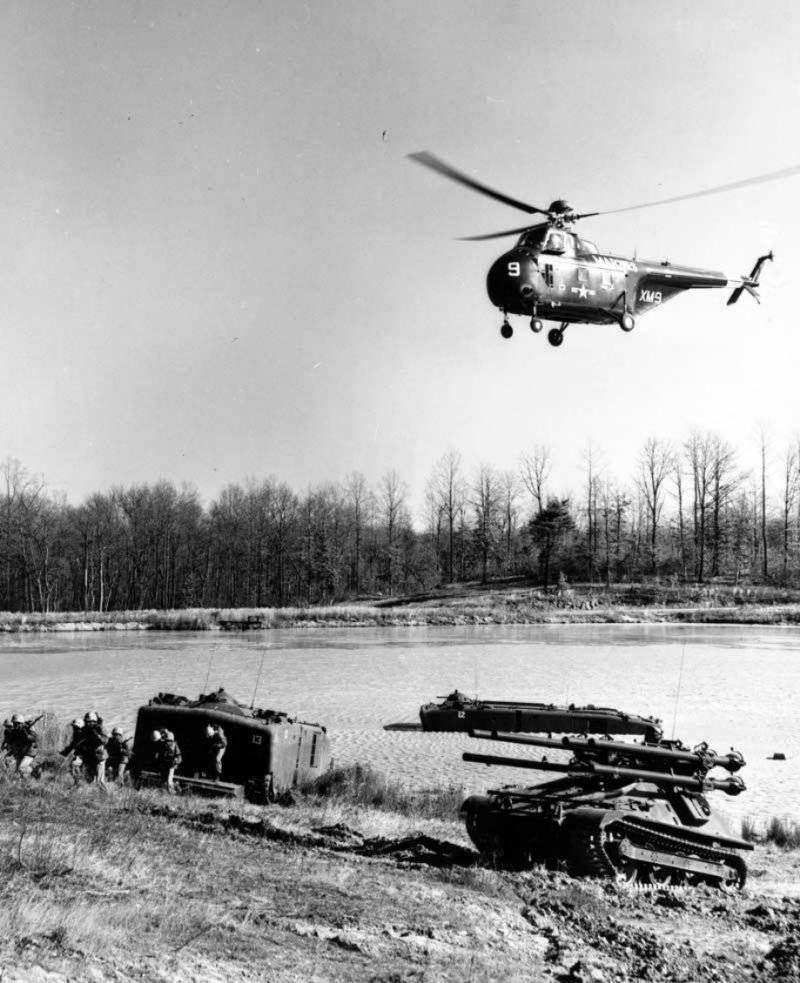
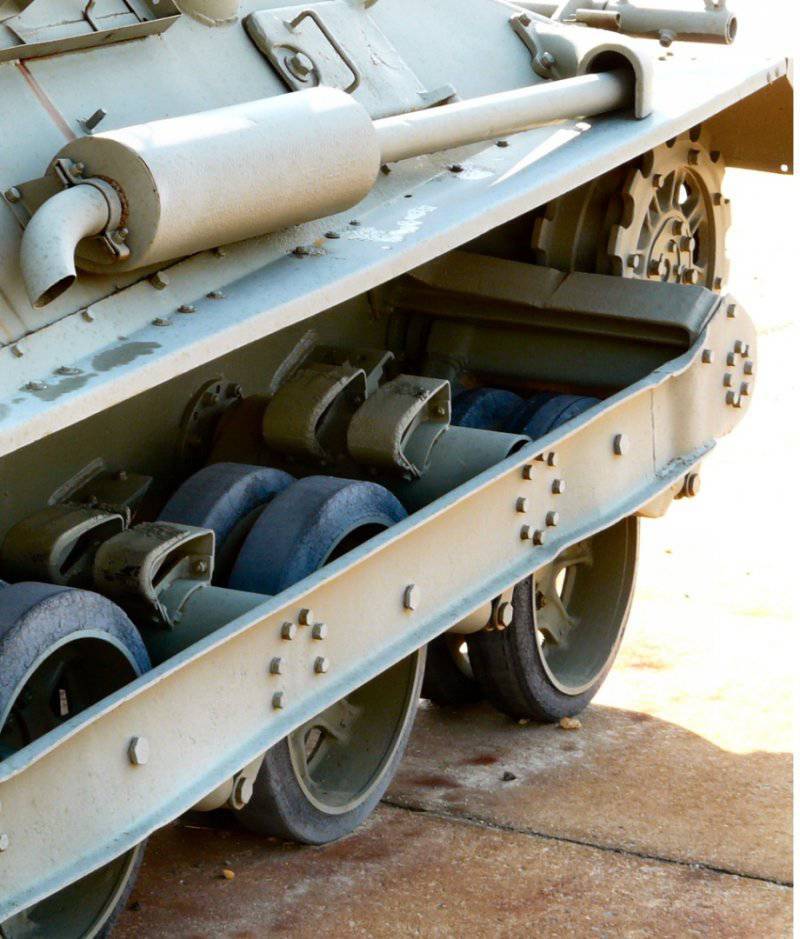
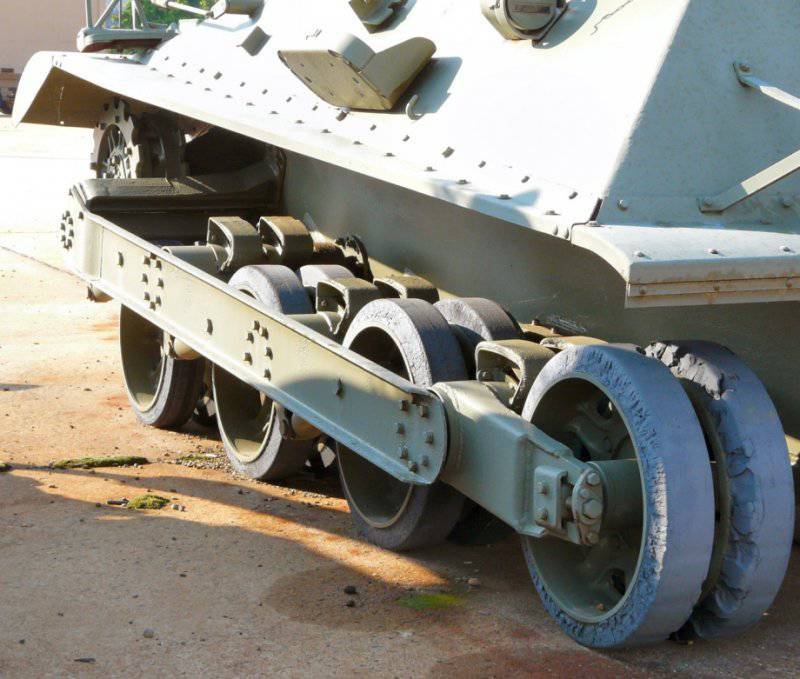
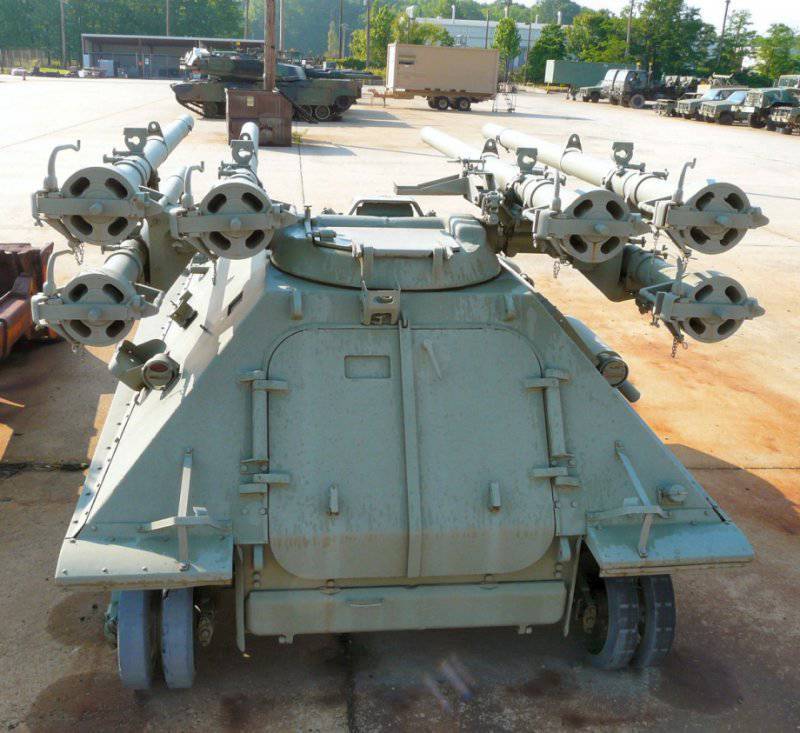
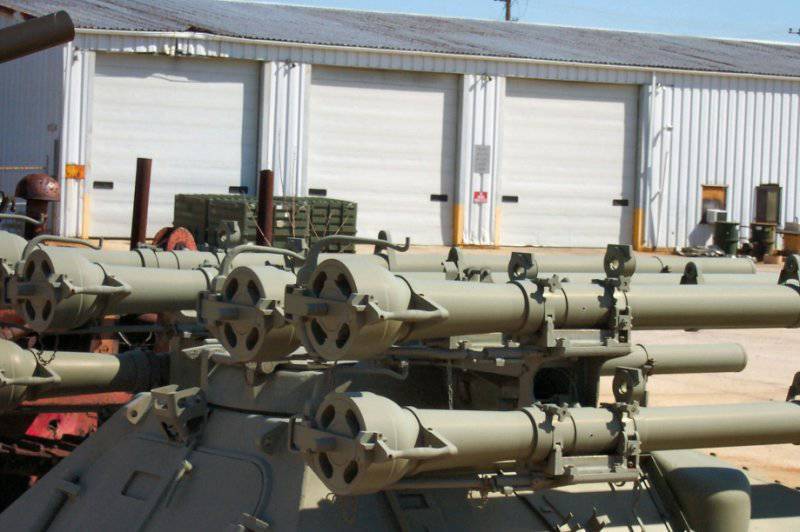
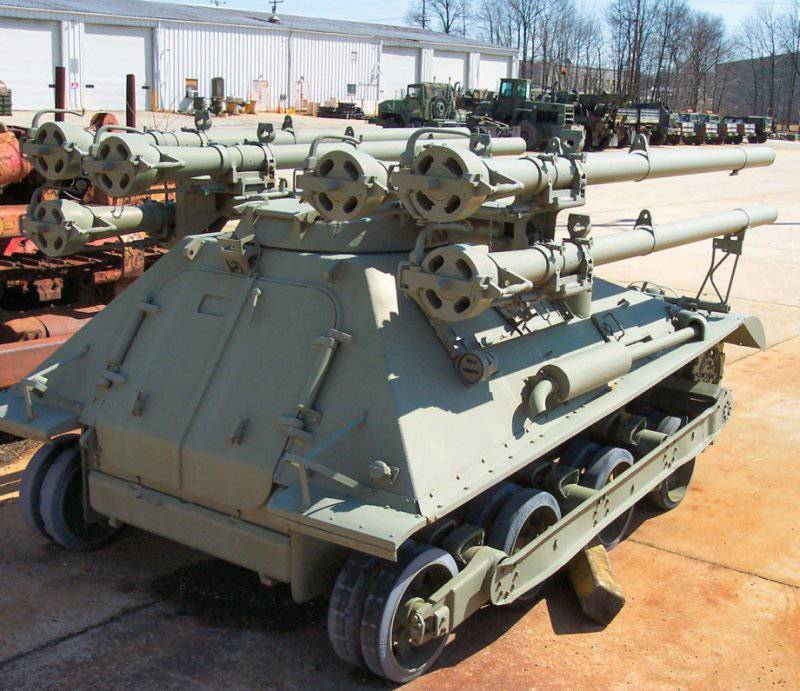
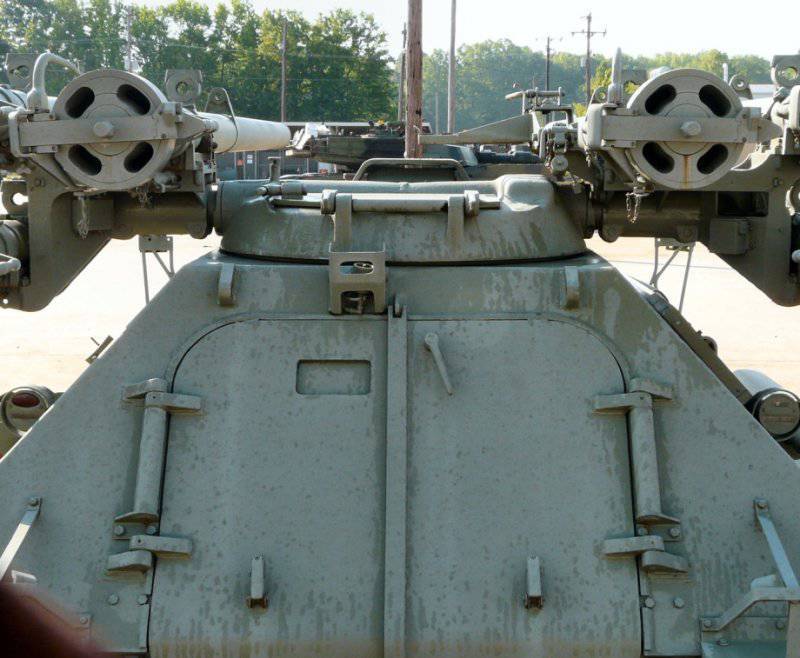
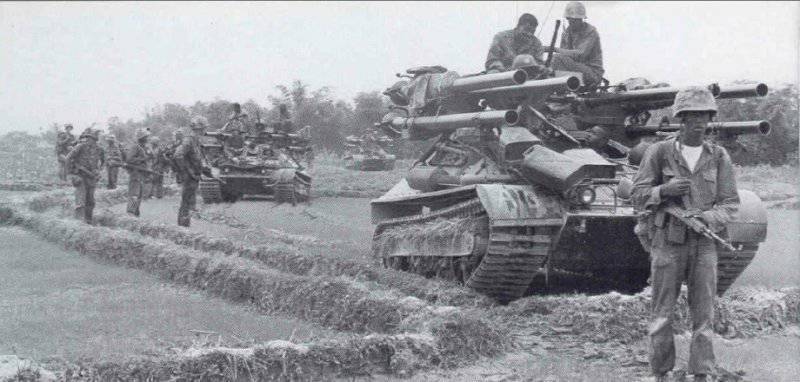
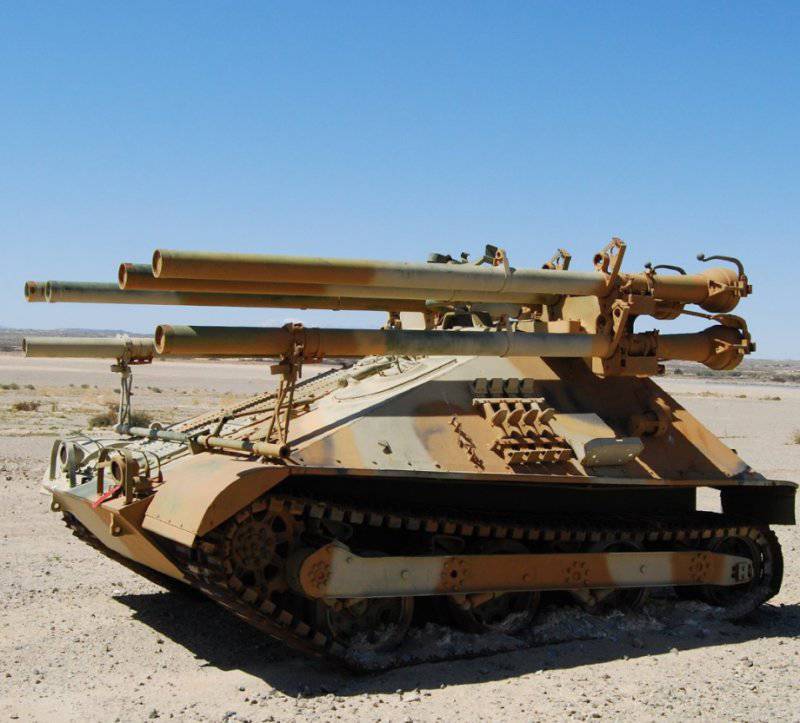
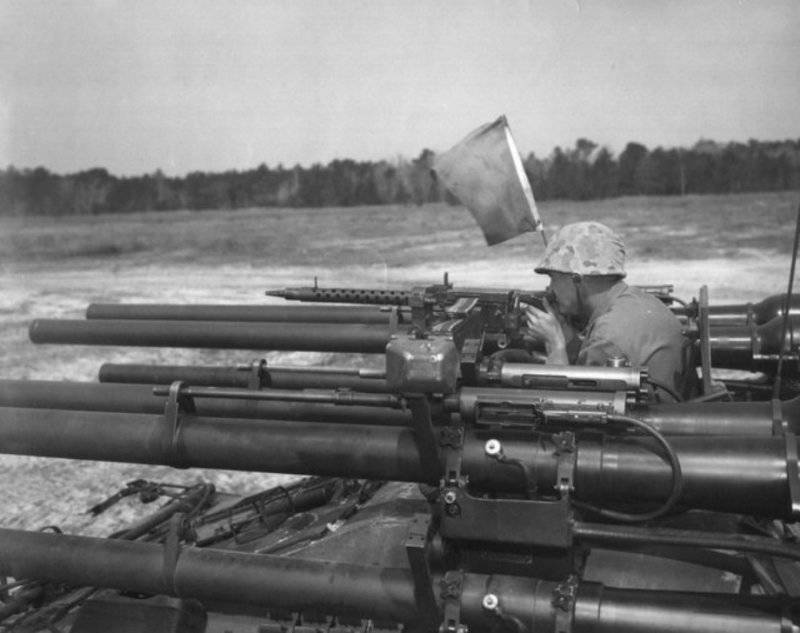
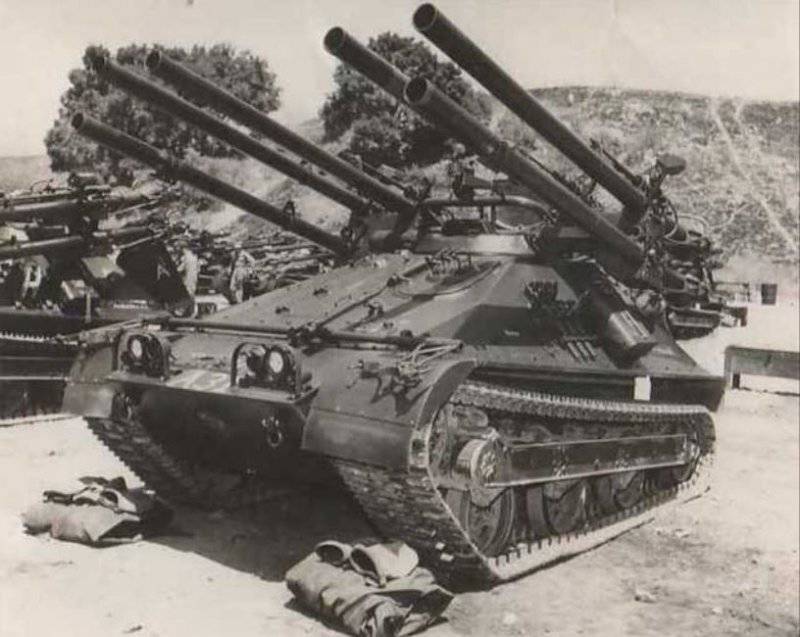
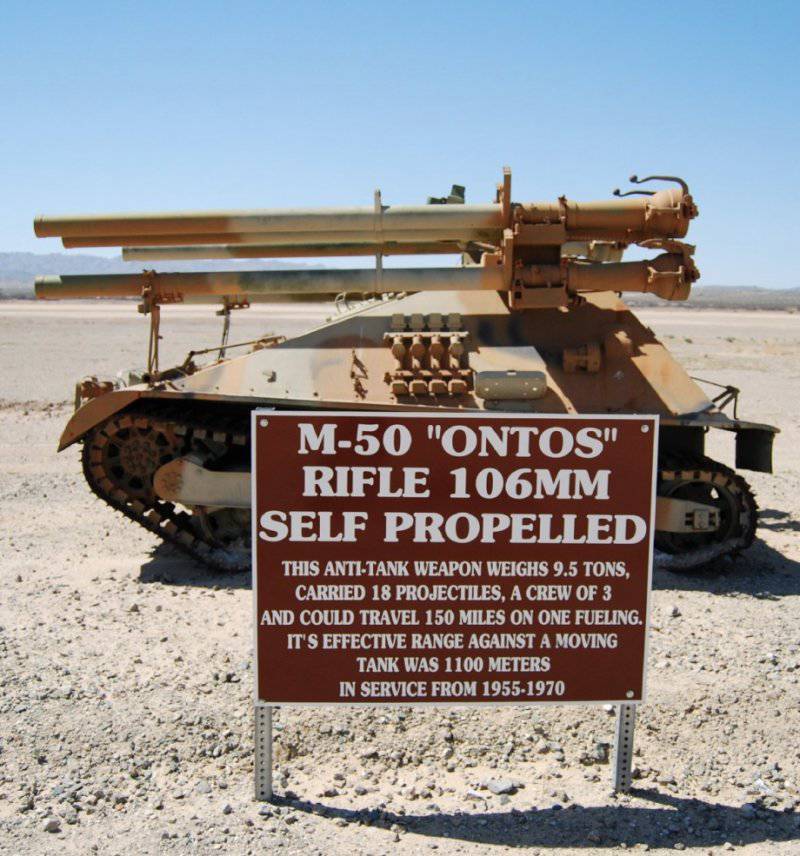
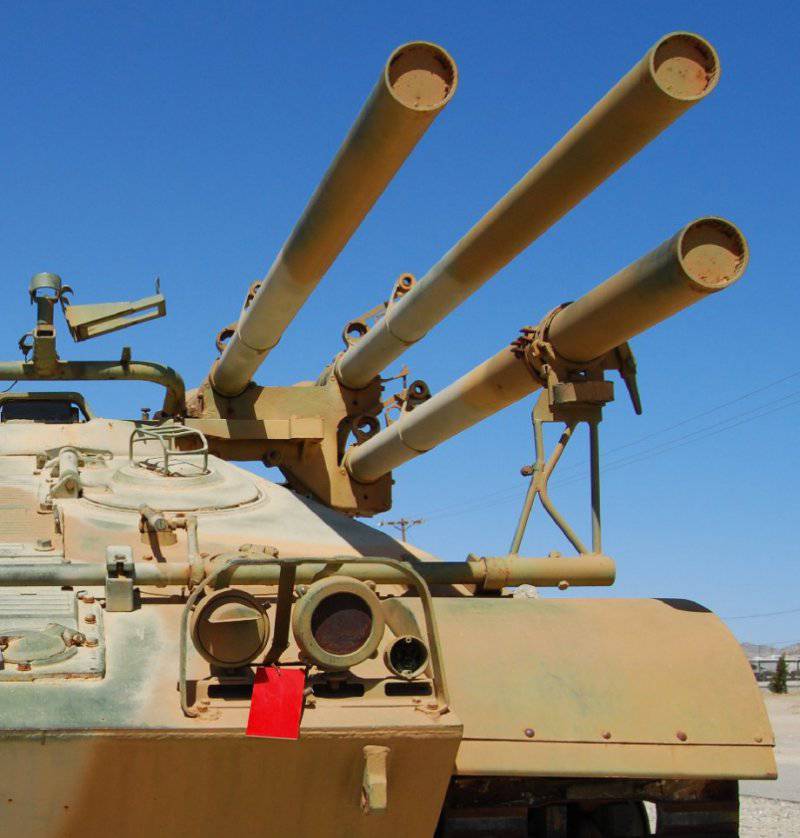
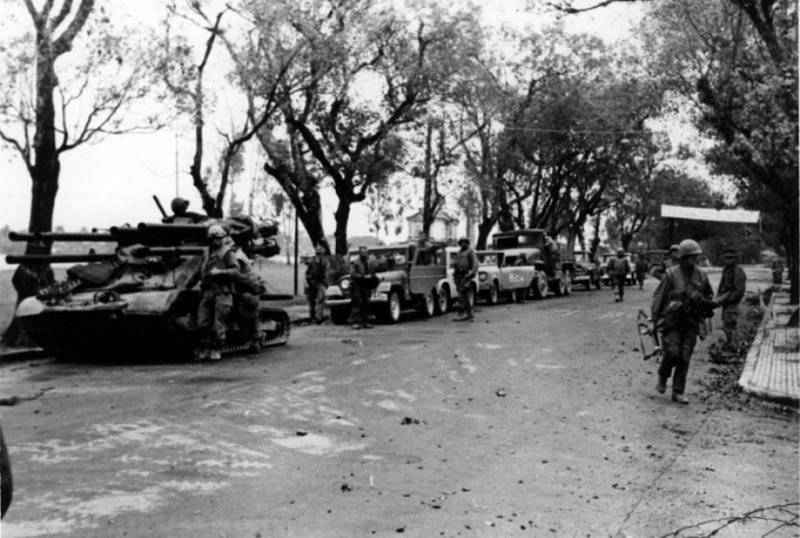
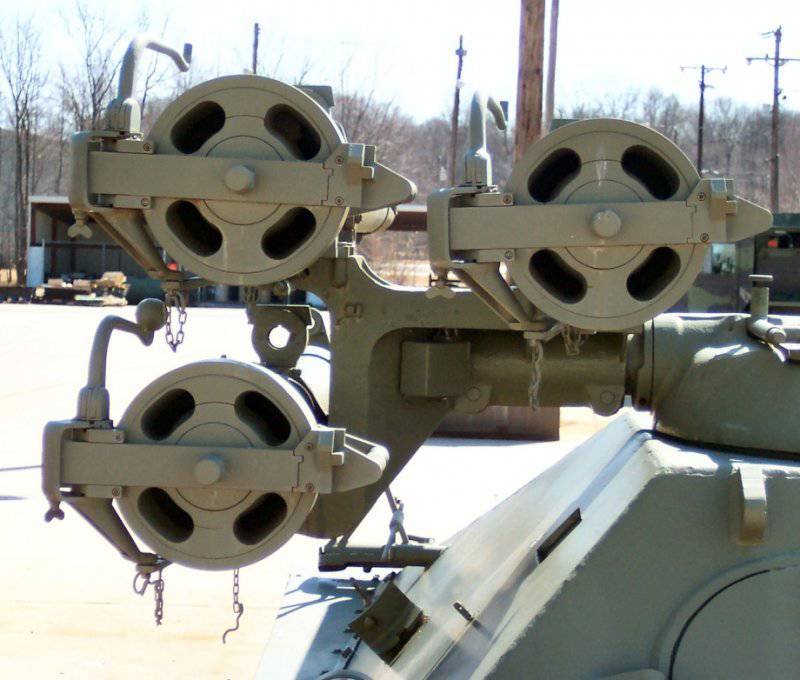
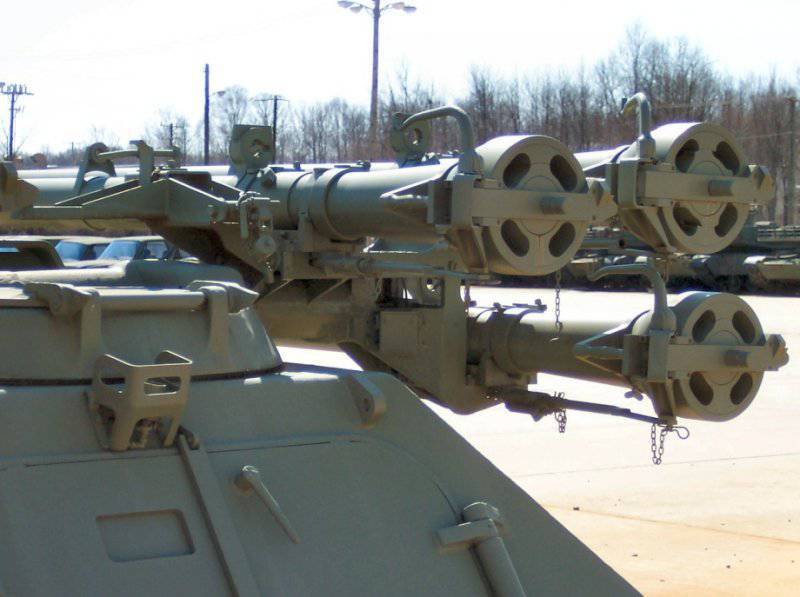
Information